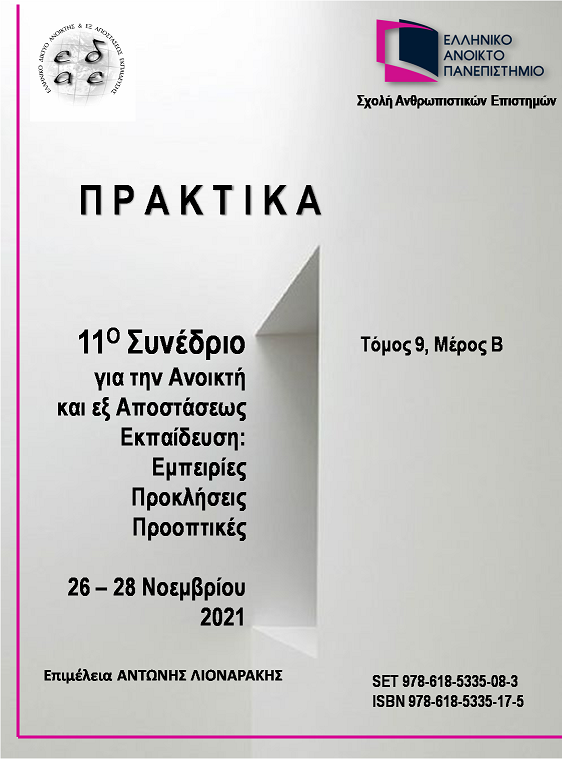Pack your bags!: Διδακτικό σενάριο εξ αποστάσεως εκπαίδευσης στο μάθημα των Αγγλικών Pack your bags!: Teaching scenario for distance learning in English

Περίληψη
Περίληψη
Το παρόν διδακτικό σενάριο για το μάθημα των Αγγλικών απευθύνεται σε μαθητές/-τριες επιπέδου αναφοράς Β1-. Το αναλυτικό περιεχόμενο του Ενιαίου Προγράμματος Σπουδών Ξένων Γλωσσών (ΕΠΣ-ΞΓ) λειτούργησε ως βάση για την ανάπτυξη εκπαιδευτικού υλικού και την οργάνωση του παρόντος μαθήματος, αξιοποιώντας τις Τεχνολογίες Πληροφορίας και Επικοινωνίας (ΤΠΕ). Υλοποιείται με συνδυασμό σύγχρονης και ασύγχρονης διδασκαλίας και στοχεύει στην άσκηση των μαθητών/-τριών σε γλωσσικές δομές θεματικών ενοτήτων που αφορούν ταξίδια. Εφαρμόζεται η εναλλακτική μέθοδος της Επικοινωνιακής Διδασκαλίας της Γλώσσας (CLT-Communicative Language Teaching), η οποία επικεντρώνεται στον/στην μαθητή/-τρια δίνοντας προτεραιότητα στον προφορικό λόγο και σε απλά γραπτά κείμενα, προωθώντας, έτσι, τη μάθηση χωρίς άγχος. Η γλωσσική ικανότητα αντιμετωπίζεται ως δεξιότητα, όχι μόνο ως γνώση, με απώτερο σκοπό την επικοινωνιακή επάρκεια και αυτονομία των μαθητών/-τριών σε περιστάσεις αυθεντικής επικοινωνίας. Δίνεται έμφαση στην αξιοποίηση εργαλείων της εκπαιδευτικής πλατφόρμας e-class για την ασύγχρονη διδασκαλία τόσο πριν όσο και μετά το μάθημα που διεξάγεται σύγχρονα μέσω της υπηρεσίας τηλεδιασκέψεων Cisco WebΕx Meetings.
Abstract
This paper presents an English teaching scenario aimed at B1- reference level students. The detailed content of Integrated Foreign Languages Curriculum (IFLC) functioned as a basis for the development of educational material and the organization of this course, utilizing Information and Communication Technologies. It is implemented with a combination of synchronous and asynchronous teaching and aims at the exercise of students in language structures of thematic units related to travel. The alternative method of Communicative Language Teaching is applied (CLT-Communicative Language Teaching), which focuses on the student and gives priority to oral speech and simple written texts, thus promoting learning without anxiety. Language ability is treated as a skill, not just as knowledge, with the ultimate goal of communication competence and autonomy of students in situations of authentic communication. Emphasis is placed on the use of e-class educational platform tools for asynchronous teaching both before and after the course that is conducted synchronously through Cisco WebEx Meetings online service.
Λεπτομέρειες άρθρου
- Τεύχος
- Τόμ. 11 Αρ. 9B (2022)
- Ενότητα
- Τμήμα Β


